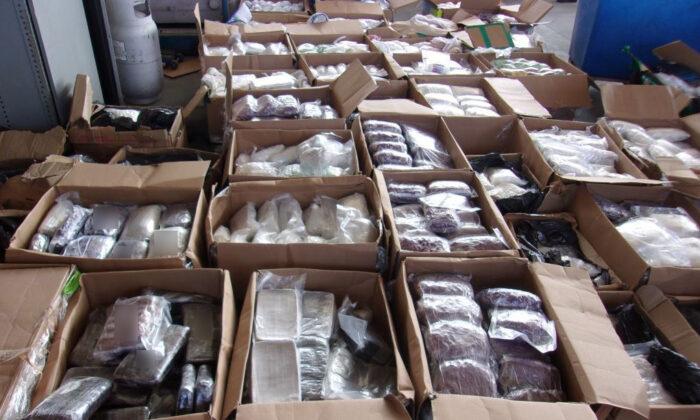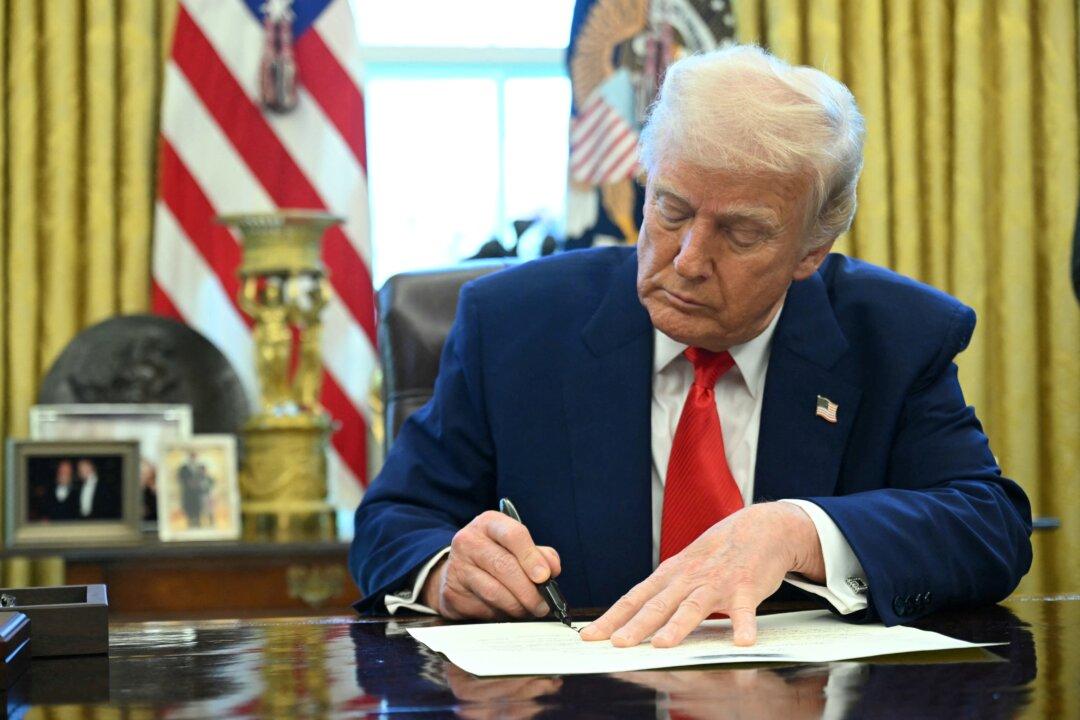U.S. Customs and Border Protection (CBP) said on Thursday that it seized 6.5 tons of methamphetamine at Eagle Pass port of entry in Texas. It is the largest seizure ever made at a port of entry in a single enforcement action.
The methamphetamine had a street value of more than $117 million, according to a press release.
The seizure was made at the Camino Real International Bridge on Feb. 18, when a CBP officer referred a tractor trailer manifesting a shipment of drying agents for piglets for secondary inspection.
The CBP said that its officers conducted “a canine and non-intrusive inspection system examination” on the truck and found nearly 13,101 pounds of alleged methamphetamine.
Mark Dawson, the special agent in charge from Homeland Security Investigations Houston, said the seizure of “a record-breaking amount” of narcotics prevented “an untold number of lives” from being destroyed.
“For far too long, drug trafficking organizations have been raking in billions of dollars at the expense of our communities that are left ravaged by addiction, death, and despair as a result of these poisonous substances,” he said.
Special agents from Homeland Security Investigations are investigating the seizure, the CBP said. The agency did not disclose if any arrests were made in connection with the seizure.
“This gargantuan methamphetamine seizure, the largest ever taken down by CBP officers at a port of entry, uniquely illustrates the serious narcotics threat our officers face on a daily basis and their effectiveness at utilizing our technological enforcement tools, expertise, and experience to zero in on these threats,” Donald Kusser, the director of field operations at CBP’s Laredo Field Office, said.
The methamphetamine was valued at over $50 million. The CBSA said that the truck was carrying a shipment destined for Winnipeg.
“This is the largest seizure of narcotics our border officers have ever made in the Prairies,” Janalee Bell-Boychuk, regional director general with CBSA, said in a statement.
The driver was arrested by CBSA agents and transferred to the Manitoba RCMP, along with the suspected narcotics. Charges include importing methamphetamine, and possession of a controlled substance for the purpose of trafficking.
UN Says Narcotics Trafficking Expanding Worldwide

Most methamphetamine seized worldwide, 90 percent, was in East and Southeast Asia and North America. The quantity has remained stable and at high levels in these areas, but trafficking has increased in the Middle East and Africa, the report said.
It added that reports and seizures including methamphetamine produced in Afghanistan, a country that grows 80 percent of the world’s poppies, which are used to make heroin, suggested the drug’s presence there is changing.
“Questions remain regarding the linkages between illegal manufacture of heroin and of methamphetamine (in Afghanistan) and whether the two markets will develop in parallel or whether one will substitute the other,” it added.







